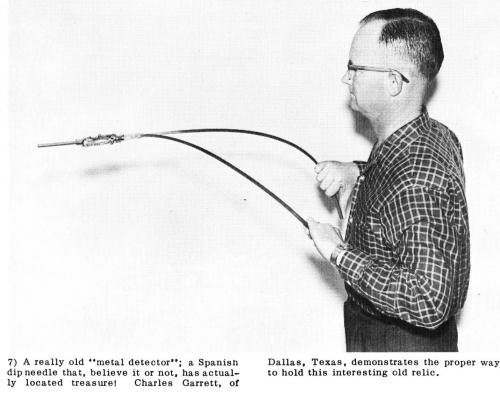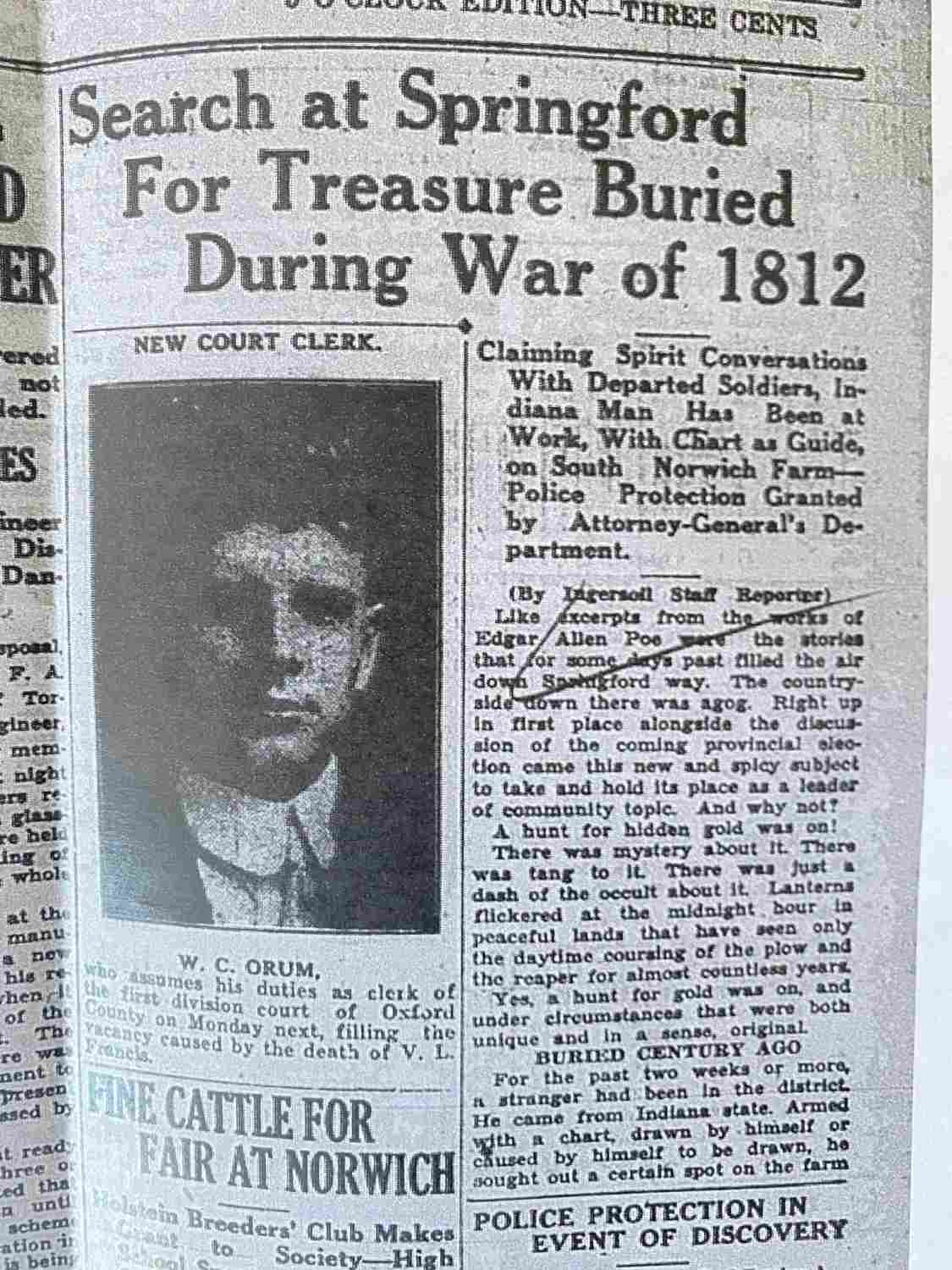The Search for the Springford Buried Treasure
The Search for the Springford Buried Treasure
By Liz Dommasch, Archivist
According to an old area legend, there is thousands of dollars’ worth in gold and silver hidden somewhere on a Springford farm, which has been the object of oft-repeated searches since the early 1800s. Although treasure seekers from far and wide have tried their luck in finding the missing coins, as far as the Archives is aware, the treasure has never been unearthed.

Portion of map showing Springford and South Norwich Township. Oxford County Historical Atlas. – 1876.
First noted in a newspaper article in the Woodstock “Sentinel-Review” in 1904, the gold and silver was said to be buried in iron kettles at the time of the American invasion of western Ontario during the War of 1812. British soldiers retreating after the defeat near Moraviantown buried the money along with two heavy brass cannons rather than run the risk of having them fall into enemy hands. At the close of the campaign the soldiers were forced to return with the regiment to England before they could regain the lost treasure.
In April of that year, James Ostrander of Big Rapids Michigan, and the son of one of the British Soldiers, arrived in the area equipped with a Spanish dip needle, an instrument to determine the location of minerals. Speaking with a representative of the “Sentinel-Review”, Mr. Ostrander noted he had made an effort to find the treasurer some years prior but had been unsuccessful. Since that time, he had gained a map showing the location of the money, as well as the Spanish dip which he assured would determine the exact location of the coins and cannons. Although he was confident he would find the treasure, he was once again unsuccessful.

An example of a Spanish dip needle. https://www.treasurenet.com/threads/spanish-dip-needles-miners-compass.36868/page-2
The story takes an interesting turn in September 1929, when the “Sentinel-Review” once again reports on the exploits of a man, this time from Indiana, searching for the missing coins. What makes the story interesting is the man was said to be imbued with strong psychic or occult beliefs and had held a spirit conversation with a deceased solider or soldiers of the War of 1812, who told the man where to look for the buried wealth. Armed with this knowledge and apparently a fairly accurate chart of the area derived from the soldiers’ accounts, the man arrived in Springford and tried to recruit a number of residents to help him in his hunt. Strangely, the article further notes that the stranger was said to search for the gold at midnight with the use of lanterns, and that police protection for the man’s endeavors was granted by the Attorney-General’s department. It appears that once again the search was unsuccessful and the man was said to have mysteriously disappeared from the Springford area after his failed attempt at finding the treasure. At any rate, he was said to have “afforded the people of Springford and district with some real material for conversation and discussion”. Mr. Samuel Palmer, who owned the property and gave permission for it to be searched, seemed indifferent to the idea and is quoted in the paper as saying “I’m not saying there is money hidden back there, and I’m not saying there isn’t.”

Final mention of the treasure, discovered by Archives staff, was made in the “Sentinel-Review” in April 1967 when an article touched on the story of the buried gold and the Indiana man’s efforts to find it. The article also goes on to mention other searches and theories related to the legend. Finlay Malcolm, a previous owner of the property, was noted from the 1929 article stating that he thought the treasure was hidden at the time of the Fenian Raids, in a more westerly portion of the farm then that was being searched. Historian B.G. Jenvey, who was a descendant of Charles Jenvey and a former owner of the property, is also quoted in the article as stating nothing has ever been taken out of the ground in terms of treasure to his knowledge. Finally, Mrs. Stanley Palmer, wife of Samuel Palmer’s son, who also owned the farm, states that her husband and his brother had also searched for the gold over the years in vain.
Remarkably, this isn’t the first story of buried treasure in Oxford County. It is said that during the War of 1812, a wagon train carrying the army pay rolled stopped for the night at Martin’s Tavern, on the Old Stage Road near Beachville. The group of soldiers were believed to be carrying boxes of Spanish coins, gold sovereigns and American gold pieces. Although sentries were posted to guard the supply wagons, sometime during the night the gold disappeared. Local legend has it that the missing gold was buried somewhere on the east hill near Beachville, and for years after the 1812 conflict, treasure hunters searched the nearby fields. To this day, no one has ever claimed to have found it.
